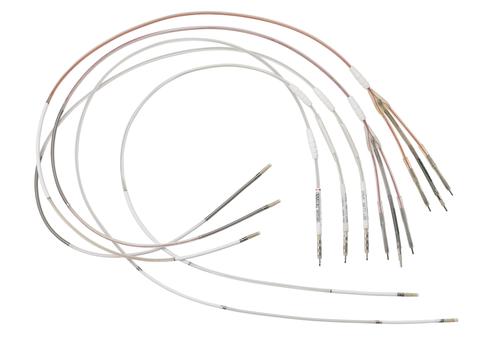Summary
Implantable cardioverter-defibrillators (ICD), consisting of a pulse generator and conducting leads, deliver resynchonization therapy to the heart. Lead fracture due to wear and abrasion is the main reliability problem of an ICD. Lead repair and revision commonly involves surgery, which is quite risky, so the safety of a lead must be assessed before implantation. A consortium, under the CRADA framework, was formed to develop standard requirements for fatigue performance of cardiac leads. The consortium is comprised of the Association for the Advancement of Medical Instrumentation (AAMI) Cardiac Rhythm Measurement Device Committee, Technical Group 2, the FDA, physicians, academics, manufacturers, and NIST. The primary objective of the committee is to distinguish between those lead designs that will be reliable and those that will not.
Description
Quantifying cardiac lead reliability is not an easy task because of the vastly different conditions under which leads must operate under when installed in a human body. The committee is actively involved in many aspects of cardiac lead reliability including: gage repeatability and reproducibility studies, measurement capability studies, and measurement standards. NIST staff have played an active roll in providing statistical expertise in support of the committee.
The committee developed a computer program, written C++ and R languages, to simulate cardiac lead life given a specific set conditions under which the lead will be operating. NIST staff adapted and updated the initial version of the program for distribution to the committee members so that it will only require R software to run. We have conducted several sensitivity studies using the simulation program to understand the effect of different input data sets and parameter settings on the expected lifetime of a cardiac lead. We provided documentation of the simulation procedure for inclusion as Annex B in ISO standard, "Cardiac Leads - Outline of Requirements for Fatigue Performance of Cardiac Rhythm Management Leads."

Major Accomplishments
T, Quinn, J. Splett, J. Wang, T. Haddad (Medtronic), and A. Himes (Medtronic) "Experimental Design and Sensitivity to Uncertainty of a Proposed Cardiac Lead Testing Standard," presented at the ASME Verification and Validation Symposium, May 7-9, 2014, in Las Vegas, NV.
J. Splett, K. Hoffman (State University of New York at Buffalo), R. Bazaz (University of Pittsburgh Medical Center), and J. Wang, "Measurement Capability Based on Image Sequences of Static and Moving Phantoms," report to committee, October 7, 2014.
J. Splett and D. McColskey, "Gage R & R for 2-Point and 3-Point Bending Stiffness Tests," report to committee, January, 2015.
J. Splett and D. McColskey, "Gage R & R for the Lead Buckle Test and Tip Penetration Test," report to committee, January, 2015.
J. Splett, T. Quinn, and J. Wang "Sensitivity Analysis of the Acceptance Criteria of AAMI PC WG1 N169," report to committee, February, 2015.

